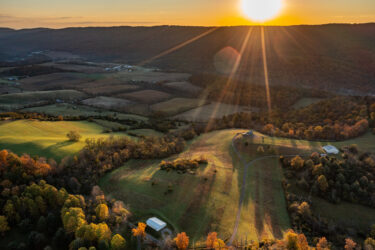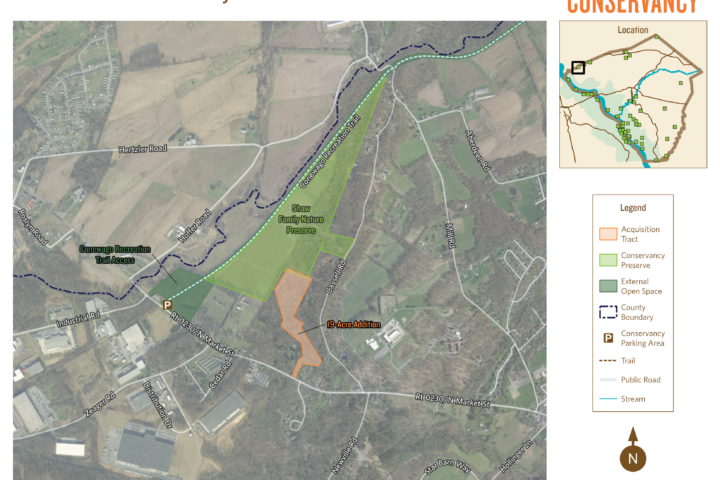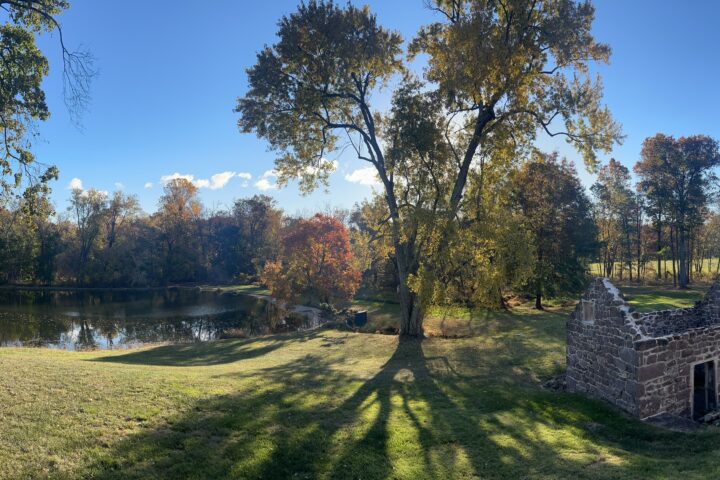The Pennsylvania Chapter of The Nature Conservancy has been awarded funding from the Pennsylvania Department of Conservation and Natural Resources (DCNR) to assist with efforts to preserve forestlands along the Kittatinny Ridge. The awards, announced by Governor Tom Wolf and DCNR Secretary, Cindy Dunn, are part of a statewide initiative to create new recreational opportunities, conserve natural resources and help revitalize local communities.
The Kittatinny Ridge, also known as the Blue Mountain, is a globally recognized migratory corridor for birds of prey, songbirds, butterflies, and many species of mammals. And it provides many people with a visual reference, as it is the prominent mountain ridge extending 185-miles through Pennsylvania from the Delaware Water Gap to the Susquehanna River Gap and south before stretching into Maryland.
“The Nature Conservancy would like to thank DCNR and Governor Wolf for this vital funding to help the Conservancy preserve these properties along the Kittatinny Ridge,” said Bud Cook, The Conservancy’s Northeast Pennsylvania Director. “These are high-priority locations that might otherwise be developed and lost forever.”
The funding will be used toward the conservation of two very different, high-priority properties along the Kittatinny Ridge in Pennsylvania. The first is a 193-acre ridge-and-valley parcel located along Cherry Valley Road in Smithfield and Stroud Townships in Monroe County, and the second, is a 352-acre ridgetop property overlooking the Susquehanna River in Rye and Penn Townships and Marysville Borough in Perry County. The Conservancy plans to preserve the properties for open space, habitat protection, and for passive recreation such as walking, bird watching and wildlife viewing.
“These lands provide respite for migratory species, provide clean drinking water for millions of people, and help to clean our air,” said Mari-Beth DeLucia, Pennsylvania Land Conservation Manager for the Conservancy. “Unfortunately, they are also at serious risk of development.”
The Conservancy is partnering with six Pennsylvania land trusts to increase the amount of protected land on the Kittatinny Ridge by working with landowners who are interested in conservation.
“There are many options for landowners to consider,” said DeLucia. “Conserving one’s land is the most important thing a landowner can do to protect their property for future generations, for wildlife, and to help protect the Ridge.”
The Conservancy would also like to thank Audubon Pennsylvania, Central Pennsylvania Conservancy, Friends of Cherry Valley, Marysville Borough, Penn Township, State Representative Mark K. Keller, State Senator Rob Teplitz, Stroud Township, and the U.S. Fish & Wildlife Service for their support.
To learn more about The Nature Conservancy’s work in Pennsylvania, visit www.nature.org/pennsylvania.
# # #
Editor’s Note:
Of additional interest may be the history of the Nature Conservancy’s land preservation efforts in Pennsylvania and the places now protected for future generations, along with stories about families who have preserved or in many cases donated their land toward preservation efforts. While the following does not represent a property along the Kittatinny Ridge, it does provide a shining example:
The Nature Conservancy, formed in 1951 to protect nature and preserve life, began its land conservation efforts in Pennsylvania in 1956 with the preservation of 200 acres in Susquehanna County. The property, donated to the Conservancy by a conservation-minded family, is today known as the Woodbourne Forest Nature Preserve. The preserve is one of the largest standing old-growth forests in northeast Pennsylvania and refuge to one of the last remaining stands of the eastern hemlock, which has otherwise been decimated throughout the region. Woodbourne Forest Nature Preserve is a shining example of how conserving land can have a lasting and meaningful impact, for future generations and for many species at risk.
Please contact Kelly Donaldson, [email protected] for additional details. Check out www.nature.org/papreserves to learn more about the Conservancy’s Pennsylvania preserves and protected places.




